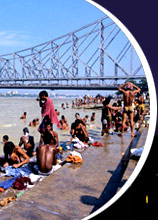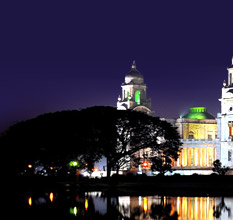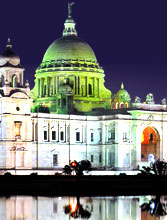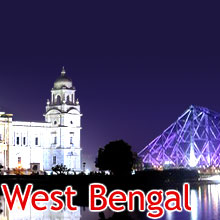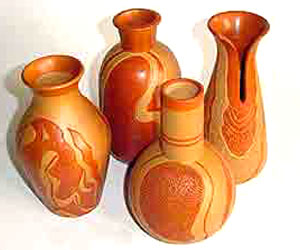 West Bengal is famous for several unique arts and crafts, all of which lend a distinctive identity to its culture. The terracotta craft is one such exclusive craft. The word ‘terracotta’ has been derived from Latin phrase “terra cocta”, which means ‘baked earth’. Terracotta craft is more or less the same as its name. It refers to the art of shaping clay into beautiful designs and then baking them at high temperature, to grant them stiffness and stability. The finest patterns of terracotta sheets can be found in Murshidabad, Birbhaum, Jessore, Hooghly and Digha towns of West Bengal.
West Bengal is famous for several unique arts and crafts, all of which lend a distinctive identity to its culture. The terracotta craft is one such exclusive craft. The word ‘terracotta’ has been derived from Latin phrase “terra cocta”, which means ‘baked earth’. Terracotta craft is more or less the same as its name. It refers to the art of shaping clay into beautiful designs and then baking them at high temperature, to grant them stiffness and stability. The finest patterns of terracotta sheets can be found in Murshidabad, Birbhaum, Jessore, Hooghly and Digha towns of West Bengal.The clay used in terracotta craft is generally a blend of two or more types of clays, found in river beds, pits and drains. They are blended together and then given beautiful shapes and patterns. The folk theme is used in the craft most of the times. The pattern is beautifully highlighted with traditional expertise and precise artwork. The items are then baked in kilns, operated at temperature between 700 and 800o C. Most of the times, local fuel, like twigs, dry leaves or firewood, is used in the kiln.
The origin of terracotta craft dates back to 16th century, when the Bengali culture came in influence of the Vaisnava movement, led by Sri Chaitanya. Interestingly, the Malla rulers of Bankura took initiative to popularize both the Vaisnava sect and the new kind of terracotta art, which would depict the Krishna sect on the beautiful temples built by them. Most of the temples with terracotta pattern were built around late 16th through 19th century. Vishnupur Temple, built in the 17th century, is one of the best examples of terracotta craft.

